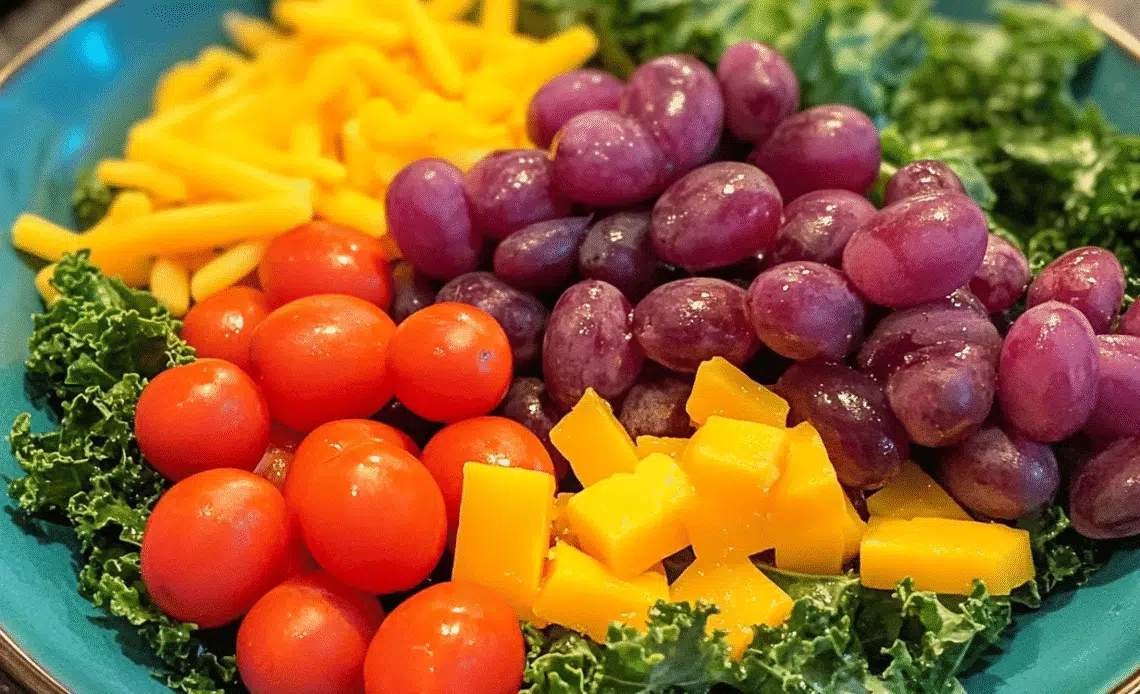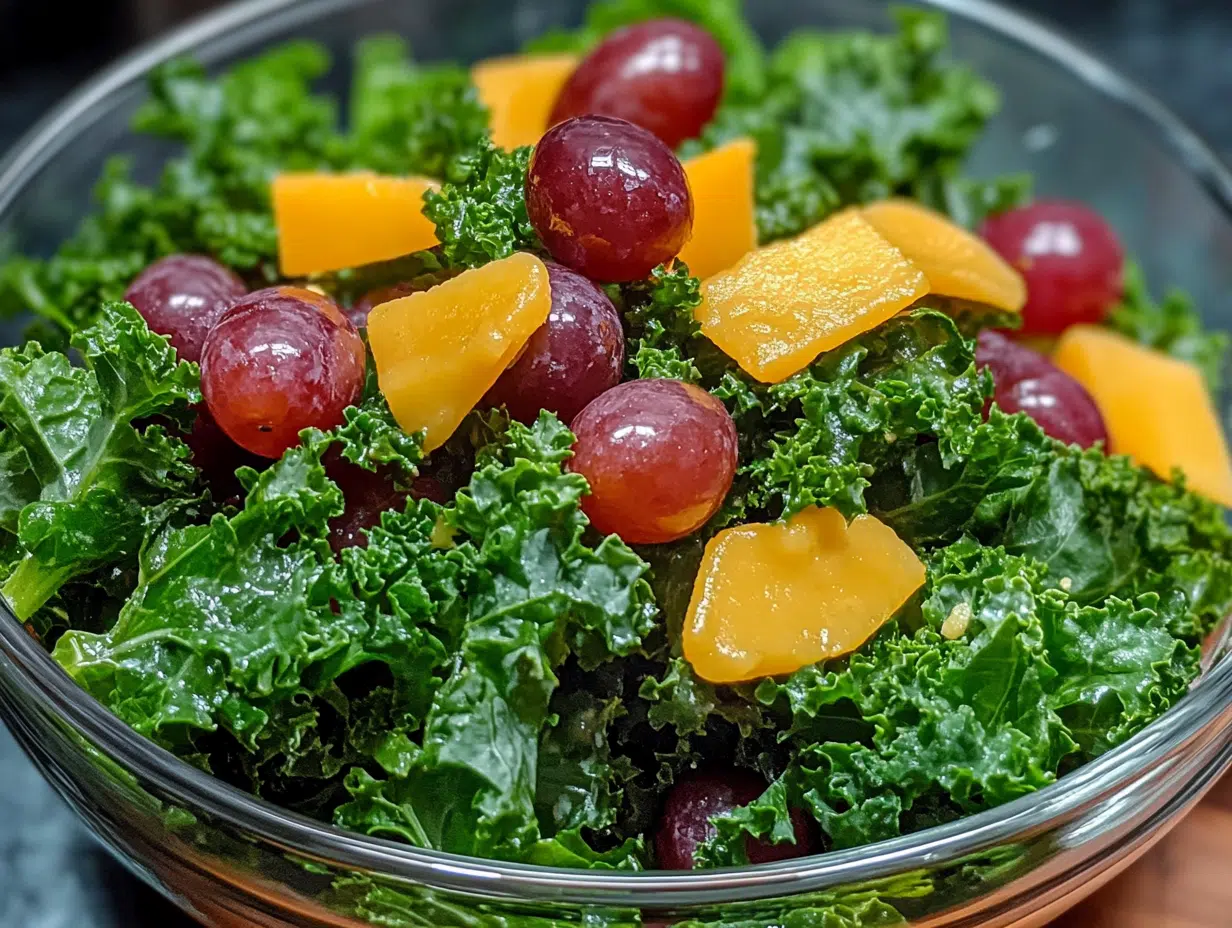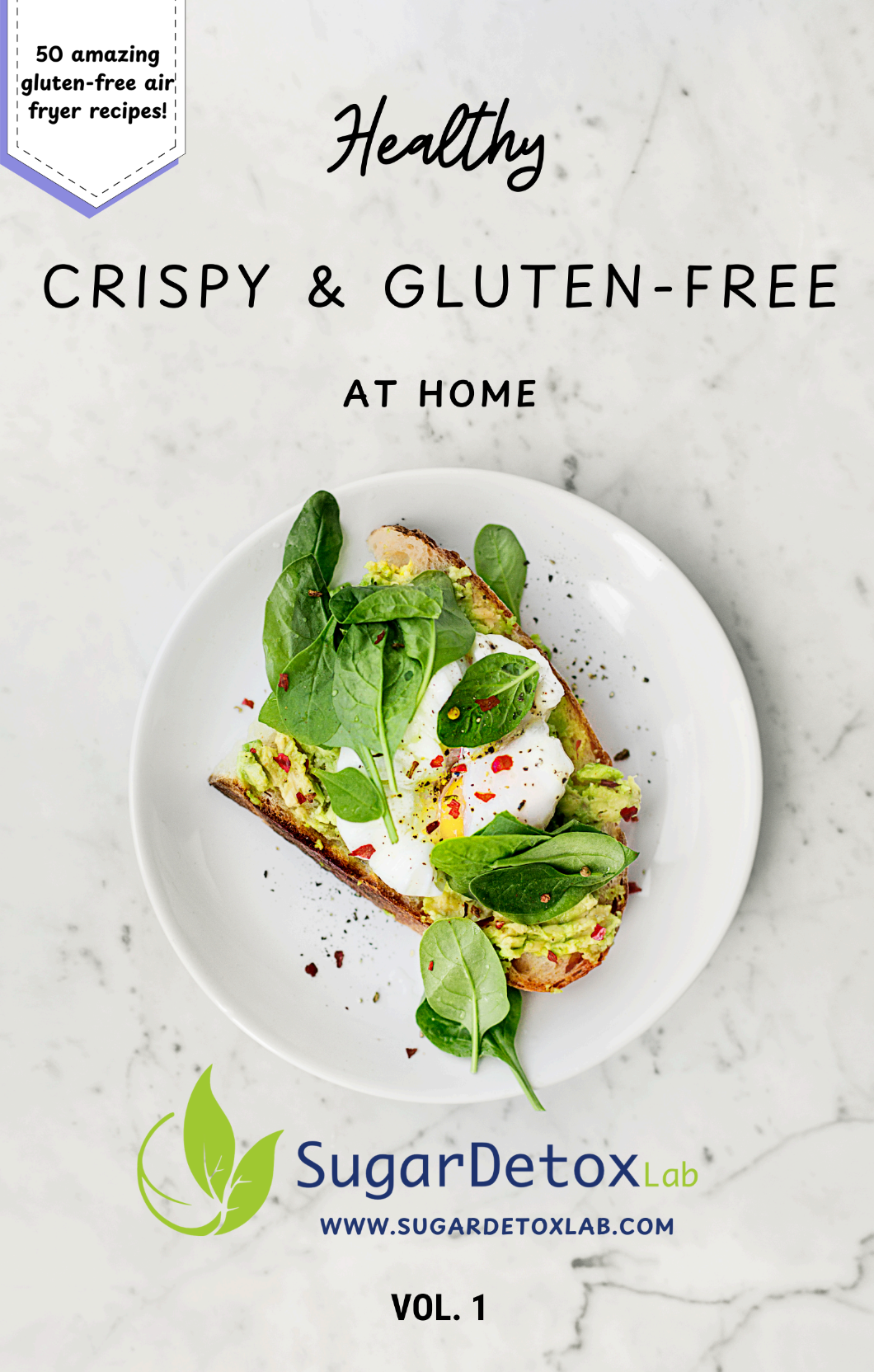In today’s fast-paced world, finding nutritious meals that support our health while fitting into busy schedules can feel overwhelming. If you’re looking to combat chronic inflammation naturally through your diet, this 15-minute anti-inflammatory salad is about to become your new go-to recipe. This massaged kale salad with grapes and cheddar isn’t just delicious—it’s a powerhouse of nutrients specifically chosen to help reduce inflammation in your body.
Whether you’re meal prepping for the week, heading to a potluck, or planning a camping trip, this anti-inflammatory salad travels beautifully and actually improves with time as the flavors meld together.
What Is an Anti-Inflammatory Salad and Why It Matters?
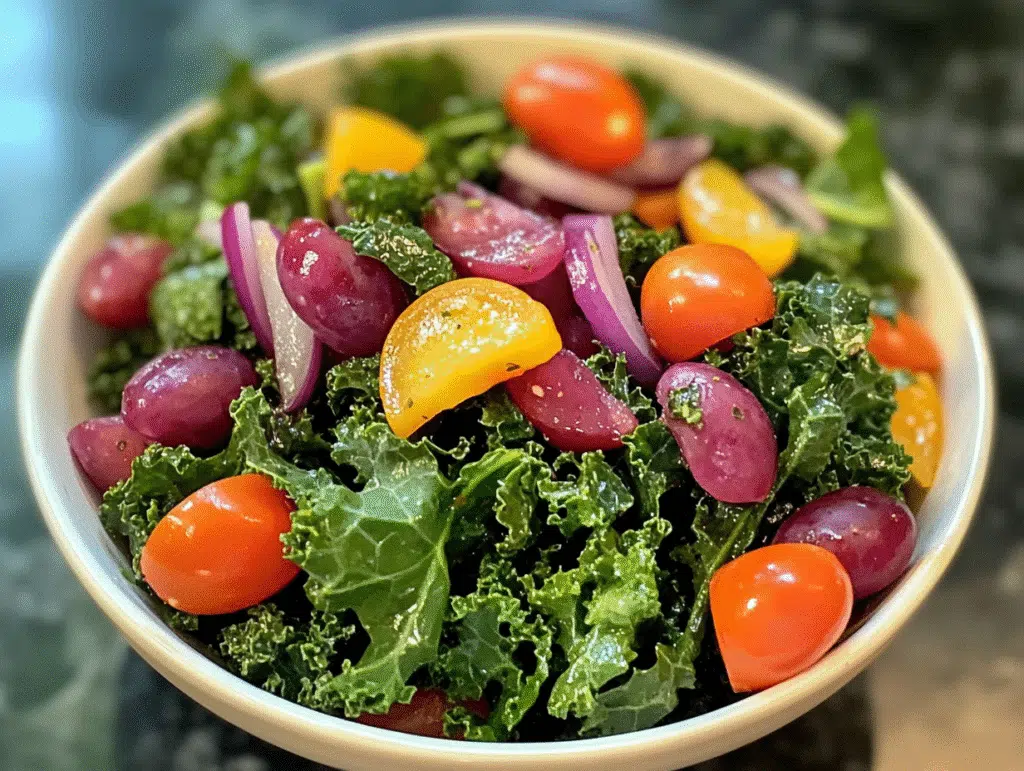
Traditional salads often focus on taste and convenience, but an anti-inflammatory salad takes nutrition a step further by incorporating specific ingredients scientifically shown to combat chronic inflammation. Unlike typical lettuce-based salads that can become soggy quickly, this anti-inflammatory salad uses massaged kale as its foundation, creating a sturdy base that holds up to dressing and transport.
The magic happens when you combine dark leafy greens rich in lutein and folate with antioxidant-packed fruits and healthy fats. This approach transforms a simple salad into a therapeutic meal that supports your body’s natural healing processes while satisfying your taste buds.
Health Benefits of This Anti-Inflammatory Salad
Nutrient-Dense Kale Foundation
Kale serves as the nutritional powerhouse in this anti-inflammatory salad, providing exceptional amounts of vitamin K, folate, and lutein. These compounds work synergistically to reduce inflammatory markers in the body. The massaging technique breaks down the tough cell walls, making these nutrients more bioavailable while creating a tender, flavorful base.
Antioxidant-Rich Grapes
Red grapes contribute anthocyanins, powerful antioxidants that give them their vibrant color and help combat oxidative stress. These compounds have been extensively studied for their anti-inflammatory properties and their ability to support cardiovascular health.
Healthy Fats from Seeds and Cheese
The pepitas (pumpkin seeds) provide omega-3 fatty acids and zinc, while the cheddar cheese adds calcium and protein. This combination helps your body absorb fat-soluble vitamins while providing sustained energy.
This anti-inflammatory salad fits perfectly into various dietary approaches including Mediterranean, paleo-friendly (when cheese is omitted), and general clean-eating plans. The glycemic index remains low due to the high fiber content and healthy fat balance.
Challenges and Practical Solutions
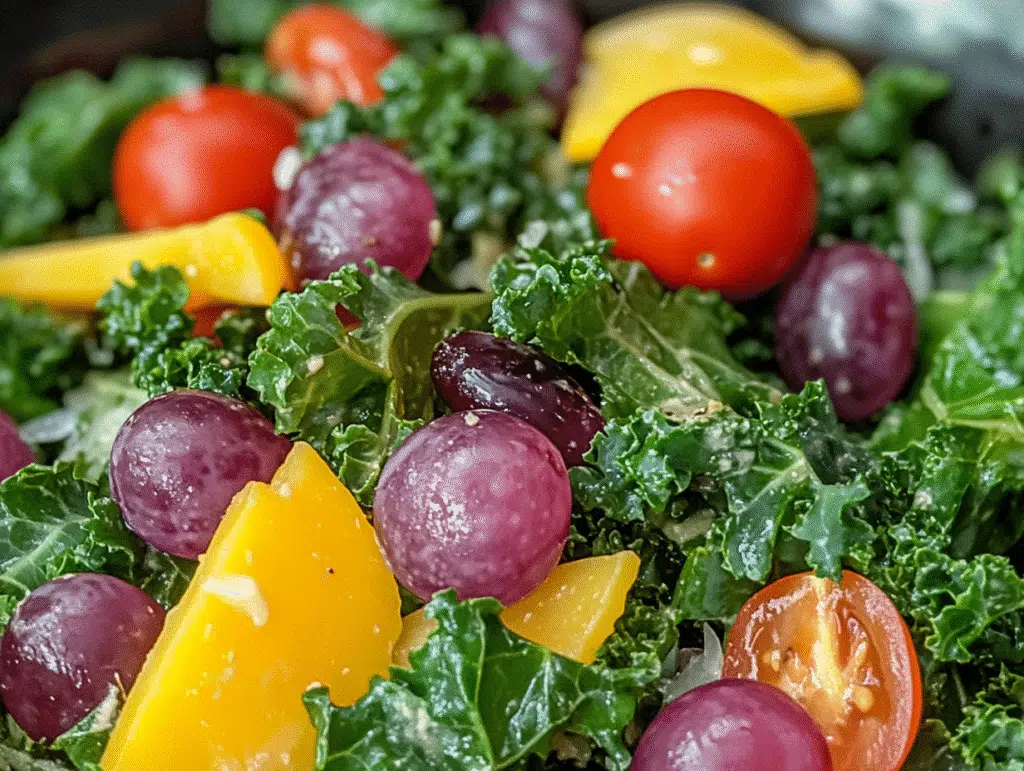
Ingredient Sourcing
Finding fresh, high-quality kale year-round can be challenging in some areas. Look for organic kale with crisp, dark green leaves, avoiding any with yellow spots or wilted edges. Frozen grapes work well if fresh ones aren’t available, though they’ll change the texture slightly.
Texture Preferences
Some people find raw kale too tough or bitter. The massaging technique is crucial—spend at least 2-3 minutes working the dressing into the leaves until they become darker and more tender. This process also reduces the natural bitterness.
Make-Ahead Considerations
This anti-inflammatory salad actually improves when made ahead, but keep wet ingredients (grapes) and crunchy elements (pepitas, cheese) separate until serving to maintain optimal texture.
Recipe: 15-Minute Anti-Inflammatory Salad
o. Substitute sunflower seeds for pepitas if preferred. This salad keeps well in the refrigerator for up to 3 days when stored in an airtight container.
Tips and Trends for Anti-Inflammatory Eating
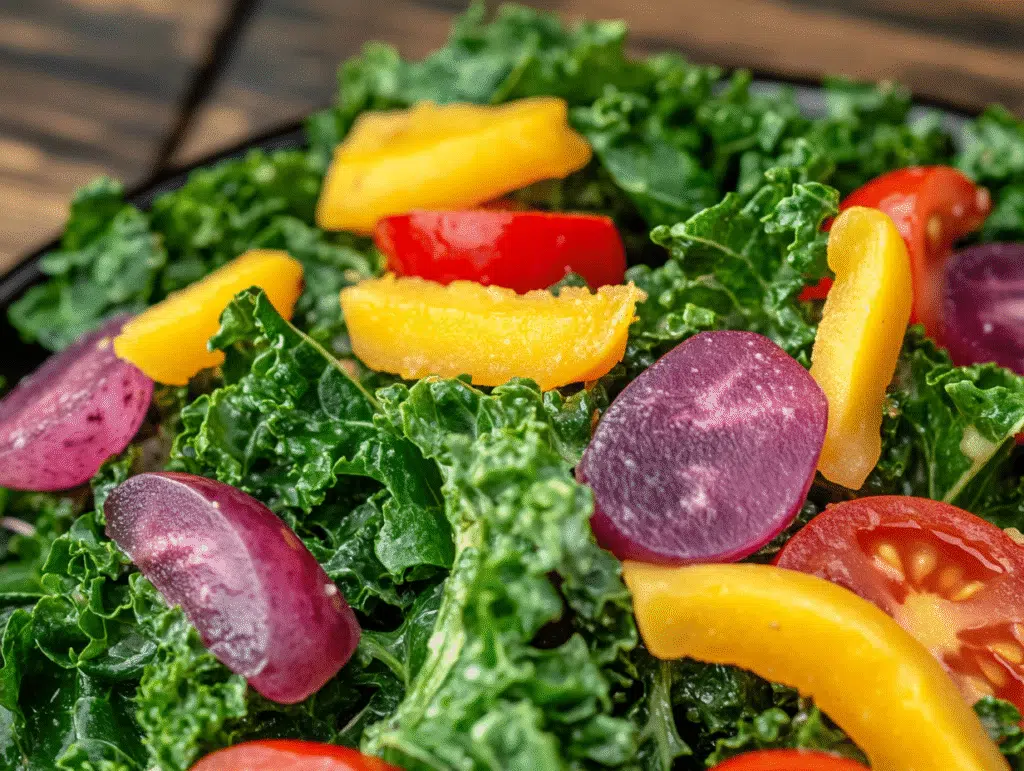
AI-Based Meal Planning Integration
Modern meal planning apps now recognize anti-inflammatory ingredients and can suggest complementary recipes. When planning your weekly meals, look for apps that highlight anti-inflammatory properties and can create shopping lists based on these nutritional priorities.
Popular Anti-Inflammatory Ingredient Swaps
Current trends in anti-inflammatory eating include using pomegranate seeds instead of grapes for extra antioxidants, swapping traditional cheese for cashew-based alternatives, and incorporating microgreens for additional nutrient density.
Essential Tools for Healthy Home Cooking
Invest in a high-quality salad spinner to properly dry greens, glass storage containers for meal prep, and a good set of sharp knives to make vegetable preparation quicker and more enjoyable.
Frequently Asked Questions
Question: Can I make this anti-inflammatory salad ahead of time without it getting soggy?
Answer: Yes! This anti-inflammatory salad actually improves when made ahead. The massaged kale holds up beautifully to dressing for 2-3 days. For best results, add grapes and cheese just before serving to maintain optimal texture and freshness.
Question: What other fruits work well in this anti-inflammatory salad?
Answer: Blueberries, strawberries, pomegranate seeds, and diced apples all provide excellent anti-inflammatory benefits. Choose fruits that are in season for best flavor and pair them with complementary cheeses like goat cheese with berries or manchego with apples.
Question: Is this anti-inflammatory salad suitable for keto or paleo diets?
Answer: This salad works well for keto due to its low carb content and healthy fats. For paleo compliance, simply omit the cheese and add extra nuts or seeds. The anti-inflammatory benefits remain intact with these modifications.
Question: How do I properly massage kale for the best texture?
Answer: Add the dressing to chopped kale and use clean hands to squeeze and massage the leaves for 2-3 minutes. You’ll notice the kale becoming darker, more tender, and reduced in volume. This process breaks down tough fibers and reduces bitterness while maximizing nutrient absorption.
Question: Can I use baby kale instead of regular kale in this anti-inflammatory salad?
Answer: Absolutely! Baby kale requires minimal massaging due to its tender nature. Reduce massaging time to 30-60 seconds, and you may want to use slightly less dressing since baby kale doesn’t absorb as much as mature leaves.
Conclusion
This 15-minute anti-inflammatory salad proves that healthy eating doesn’t have to be complicated or time-consuming. By combining nutrient-dense kale, antioxidant-rich grapes, and healthy fats, you’re creating a meal that actively supports your body’s natural healing processes while satisfying your taste buds.
The versatility of this anti-inflammatory salad makes it perfect for busy weeknights, social gatherings, and outdoor adventures. As you experiment with different fruit and cheese combinations, you’ll discover endless variations that keep this healthy recipe exciting and fresh.
Ready to transform your approach to salads? Try this anti-inflammatory salad recipe today and experience how delicious healthy eating can be. For more nutrient-dense, inflammation-fighting recipes, explore our complete collection at sugardetoxlab.com. Don’t forget to subscribe to our newsletter for weekly healthy recipe inspiration, and share your favorite variations in the comments below!


